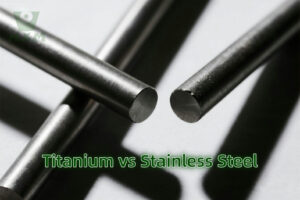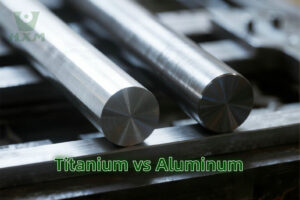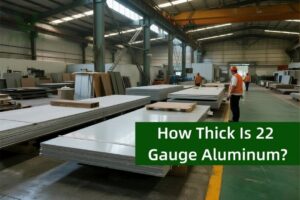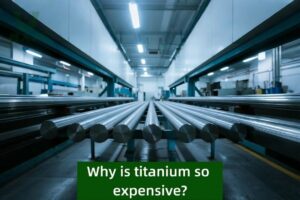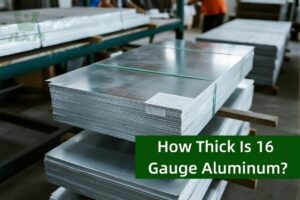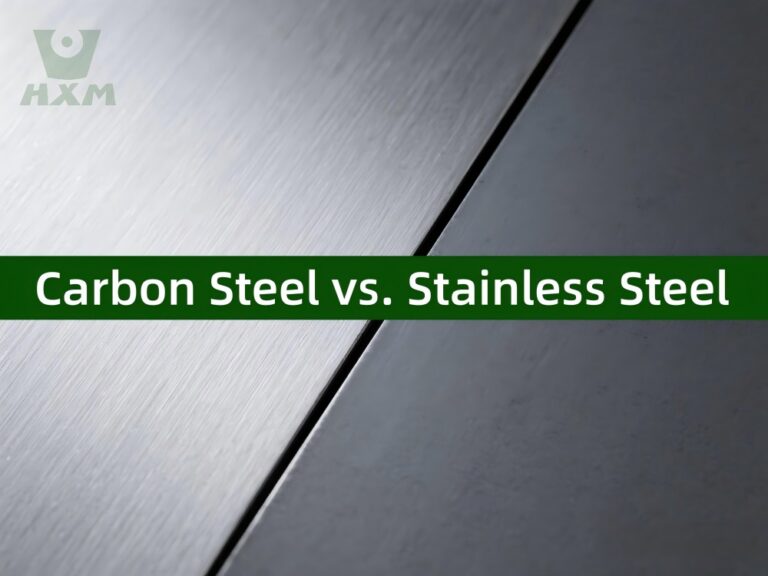
Executive Summary - Carbon Steel vs. Stainless Steel
Carbon Steel vs. Stainless Steel: Carbon steel and stainless steel dominate industrial applications – but choosing incorrectly risks project failure, safety hazards, and cost overruns. Key decision factors:
- Corrosion Environment (chlorides, acids, humidity)
- Mechanical Demands (strength, toughness, fatigue)
- Total Ownership Cost (material + fabrication + maintenance)
- Regulatory Compliance (ASME, FDA, NACE)
1. Foundational Definitions: What Sets These Alloys Apart?
1.1 What is Carbon Steel?
Carbon steel is an iron-carbon alloy containing 0.05–2.1% carbon by weight, with no minimum chromium requirement. Its properties are primarily determined by carbon content:
- Low-Carbon Steel (<0.3% C): High ductility, weldability (e.g., ASTM A36 structural beams)
- Medium-Carbon Steel (0.3–0.6% C): Balanced strength/toughness (e.g., AISI 1045 shafts)
- High-Carbon Steel (>0.6% C): Extreme hardness, wear resistance (e.g., AISI 1095 springs)
As a leading carbon steel manufacturer, Huaxiao-Alloy produces over 200 grades meeting ASTM, EN, JIS, and GB standards.
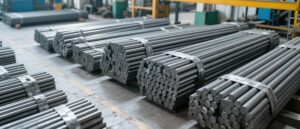
ISO-certified supplier of 100+ carbon steel bars. Round/flat/hex bars up to 300mm. Cutting, machining, coating. FOB/CIF global delivery.
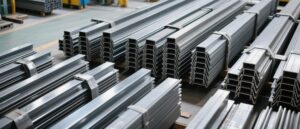
ISO-certified supplier of carbon steel beams (IPN/IPE, HEB/HEA). 80+ grades, cutting/punching services. FOB/CIF global delivery in 15-25 days.

ISO-certified supplier of 80+ carbon steel tube pipe grades (0.5-300mm). Laser cutting, bending, threading. FOB/CIF global ports.
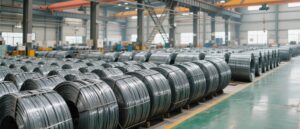
ISO-certified carbon steel wire supplier. 0.1-20mm diameters, 100+ grades, tensile 400-2,500 MPa. Bulk pricing & specs. Request quote!
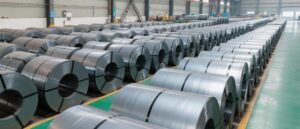
Top carbon steel coil manufacturer. Hot/cold-rolled coils in all grades (low/high carbon). Price lists + specs. ISO-certified.

Huaxiao-Alloy: Leading carbon steel plate/sheet supplier & manufacturer. ASTM, AISI, DIN grades, global certifications, and custom solutions. Request a quote today!
1.2 What is Stainless Steel?
Stainless steel is defined by its minimum 10.5% chromium content, forming a self-repairing passive oxide layer that resists corrosion. Key categories include:
- Austenitic (300 Series): Non-magnetic, superior corrosion resistance (e.g., 304/316)
- Ferritic (400 Series): Magnetic, moderate corrosion resistance (e.g., 430)
- Martensitic (400/500 Series): Heat-treatable, high strength (e.g., 410/440C)
- Duplex (2205/2507): Mixed austenitic-ferritic structure for extreme environments
Huaxiao-Alloy supplies premium stainless steel grades with up to 20% chromium for critical applications.
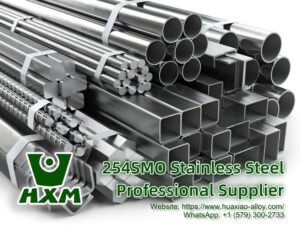
Huaxiao-Alloy: Premium 254SMO stainless steel manufacturer offering sheets, tubes, bars, and custom solutions. Explore specs, applications, and FAQs.
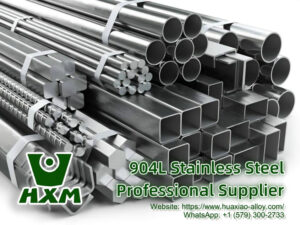
Huaxiao-Alloy: Premium 904L stainless steel manufacturer offering sheets, tubes, bars, and custom solutions. Explore specs, applications, and FAQs.
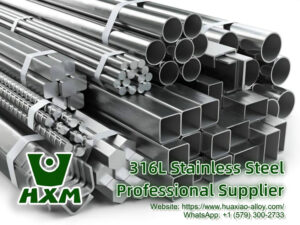
Huaxiao-Alloy: Premium 316L stainless steel manufacturer offering sheets, tubes, bars, and custom fabrication. Explore specs, applications, and FAQs.
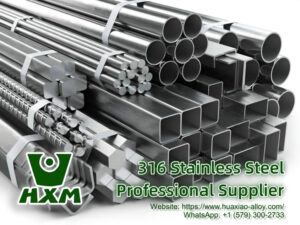
Huaxiao-Alloy: Premium 316 stainless steel manufacturer offering sheets, tubes, bars, and custom fabrication. Explore specs, applications, and FAQs.
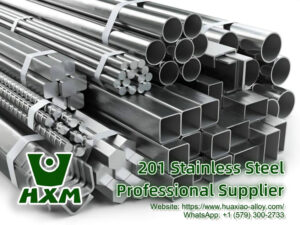
Huaxiao-Alloy: Trusted 201 stainless steel manufacturer offering sheets, coils, bars, and custom fabrication. Explore specs, applications, and FAQs.
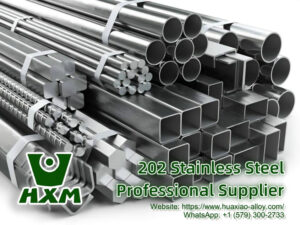
Huaxiao-Alloy: Trusted 202 stainless steel manufacturer offering sheets, coils, bars, and custom solutions. Explore specs, applications, and FAQs.
2. Fundamental Composition Differences - Carbon Steel vs. Stainless Steel
| Element | Carbon Steel (%) | Stainless Steel (%) | Functional Impact |
|---|---|---|---|
| Iron (Fe) | 98-99.5 | 50-85 | Base structural matrix |
| Carbon (C) | 0.05-2.0 | ≤1.2 | Hardness & tensile strength |
| Chromium (Cr) | <0.3 | 10.5-30 | Corrosion resistance |
| Nickel (Ni) | – | 0-15 | Ductility & cryogenic performance |
| Molybdenum (Mo) | <0.1 | 0-7 | Pitting resistance |
| Manganese (Mn) | 0.3-1.65 | ≤2.0 | Deoxidation agent |
Data per ASTM A36 (carbon) / ASTM A240 (stainless) standards
Manufacturer Insight: At Huaxiao-Alloy, we precisely control composition ranges (±0.03%) to meet specific application requirements across both steel families.
3. Mechanical Properties Comparison - Carbon Steel vs. Stainless Steel
(Tested per ASTM E8/E18 at 20°C)
| Property | AISI 1045 Carbon Steel | 304 Stainless Steel | 416 Stainless Steel |
|---|---|---|---|
| Yield Strength (MPa) | 450 ±20 | 215 ±15 | 275 ±20 |
| Tensile Strength (MPa) | 750 ±30 | 505 ±25 | 485 ±30 |
| Elongation (%) | 15 ±2 | 55 ±5 | 28 ±3 |
| Hardness (HB) | 201 | 150 | 217 |
| Impact Energy (J) | 46 | 112 | 54 |
| Fatigue Limit (MPa) | 335 | 250 | 310 |
Supplier Advantage: Huaxiao-Alloy offers ultra-high-strength variants like 1095 carbon steel (YS: 990 MPa) and 17-4PH stainless (YS: 1,100 MPa) for extreme service conditions.
4. Corrosion Resistance Analysis - Carbon Steel vs. Stainless Steel
Salt Spray Testing Results (ASTM B117)
| Environment | A36 Carbon Steel | 316L Stainless | Superior Solution |
|---|---|---|---|
| Urban Atmosphere | 2 years | 70+ years | Stainless (Passivation layer) |
| 3% NaCl Solution | 72 hours | 1,000+ hours | Stainless (Mo content) |
| Acidic Conditions (pH3) | 24 hours | 480 hours | Alloy 20 stainless |
| Galvanic Corrosion | Severely affected | Cathodic protection | Insulated connections |
Manufacturer Testing Note: Huaxiao-Alloy certifies pitting resistance equivalent (PRE) values:
PRE = %Cr + 3.3×%Mo + 16×%N
304 SS: PRE = 19.0 | 316L SS: PRE = 26.5 | 254 SMO: PRE = 43.5
Carbon steel relies on external barriers (galvanization, paint) for protection. Stainless steel utilizes electrochemical passivation:
Corrosion Resistance Index = %Cr + 3.3×%Mo + 30×%N
Example:
- Carbon Steel A36: CRI = 0
- 316L Stainless: CRI = 26.5
- 254 SMO: CRI = 43.5
Supplier Solution: Huaxiao-Alloy offers metal clad materials (carbon steel core + stainless layer) for cost-sensitive corrosive environments.
5. Thermal Properties Contrast - Carbon Steel vs. Stainless Steel
| Parameter | Medium C Steel | Austenitic 304 | Application Impact |
|---|---|---|---|
| Max Service Temp (°C) | 425 | 870 | Furnace components |
| Thermal Conductivity (W/m·K) | 46 | 15 | Heat exchangers |
| CTE (10⁻⁶/K) | 11.8 | 17.3 | Welding distortion |
| Embrittlement Risk | 250-400°C (blue brittleness) | 450-870°C (sensitization) | Critical thermal cycling |
Engineering Solution: Huaxiao-Alloy provides stabilized 321 stainless (Ti added) for 425-815°C service where carbon steel would fail.
6. Machinability & Fabrication (Industrial Perspective) - Carbon Steel vs. Stainless Steel
| Process | Carbon Steel (SAE 1117) | Stainless (303) | Best Machined Alloy |
|---|---|---|---|
| Machining Speed (SFM) | 150-250 | 60-100 | Free-cutting steel |
| Tool Wear Index | 1.0 | 3.5 | Leaded steel |
| Weldability (CEN) | CEN=0.38 (good) | CEN=1.75 (poor)* | GMAW-optimized grades |
| Formability (r-value) | 1.1 | 0.95 | Drawing-quality steel |
Note: CEN = C + 0.15×Al + 0.04×Cr + 0.13×Mo + Ni/14
Supplier Capability: Huaxiao-Alloy supplies laser-cut/pre-machined blanks to bypass fabrication challenges with hardened alloys.
7. Industry-Specific Alloy Selection Guidelines - Carbon Steel vs. Stainless Steel
| Sector | Preferred Material | Huaxiao-Alloy Solution | Critical Factor |
|---|---|---|---|
| Oil & Gas | 5Cr-0.5Mo carbon steel | 316L Clad pipes | Sulfide stress cracking |
| Architecture | Corten weathering steel | 2205 duplex stainless | Structural integrity |
| Food Processing | 440 stainless steel | Electropolished 316 | Bacterial resistance |
| Automotive | HSLA 340 carbon steel | 301LN stainless springs | Strength-to-weight |
| Chemical | Glass-lined carbon steel | Hastelloy C-22 | HCl resistance |
7.1 When to Choose Carbon Steel
- Structural Framing (Yield strength ≤345 MPa)
- Mass Production Components (Cost savings >60% vs stainless)
- High-Thermal-Conductivity Systems (46 W/m·K vs 15 W/m·K)
Top Huaxiao-Alloy Recommendations:
- ASTM A572 Gr. 50 for bridges
- EN 10025 S355JR for construction
- JIS G4051 S45C for automotive parts
7.2 When to Choose Stainless Steel
- Chemical Processing (Resists pitting up to pH 2.5)
- Medical Equipment (Passivates to <0.5µm Ra smoothness)
- Marine Environments (Survives 1,000+ salt spray hours)
Premium Huaxiao-Alloy Solutions:
- 2205 Duplex for offshore platforms
- 316L for pharmaceutical tanks
- 17-4PH for aerospace fasteners
Why Choose Huaxiao Alloy?
Global Supply Chain:
- Lead Times: 15 days (carbon) / 25 days (stainless)
- Certifications: PED 2014/68/EU · ASME II · NORSOK M650
- Samples: Free metallographic analysis for qualifying projects
→ Request Expert Consultation: [email protected]
A: Yes – but only in extreme conditions. 304SS withstands <100ppm chlorides; 316SS handles <500ppm. For seawater, Huaxiao-Alloy specifies super duplex 2507.
A: Only with FDA-approved epoxy coatings. We recommend 316L stainless (no coating) for direct food contact per NSF/51.
A: Carbon steel: Higher tensile strength (AISI 1095: 965 MPa). Stainless steel: Higher toughness (17-4PH: 1,380 MPa yield after aging).
Carbon steels (CE <0.40) weld easier. Stainless requires controlled heat input—our L-Tek™ 308LSi filler metal reduces hot cracking by 90%.
A: Carbon steel: Ferromagnetic • Austenitic stainless: Non-magnetic (work-hardened regions may attract magnets) • Ferritic/Martensitic: Magnetic.
A: Critical thresholds: Chloride >50ppm • pH<4.5 • H₂S >30ppm • Temp >205°C in oxidizing environments. Huaxiao-Alloy provides material selection software.


